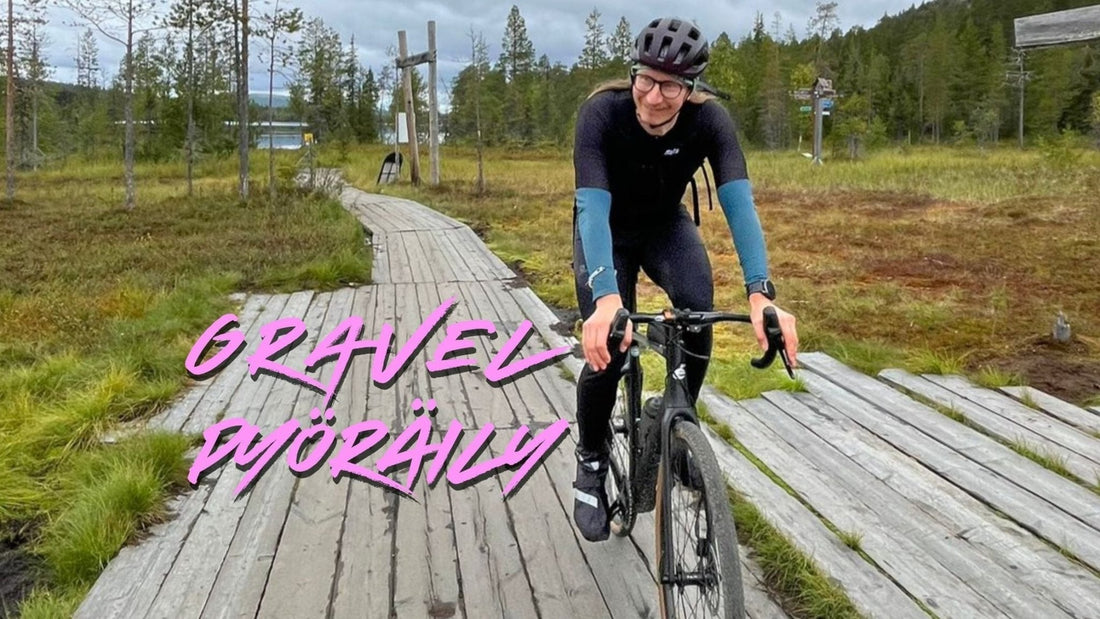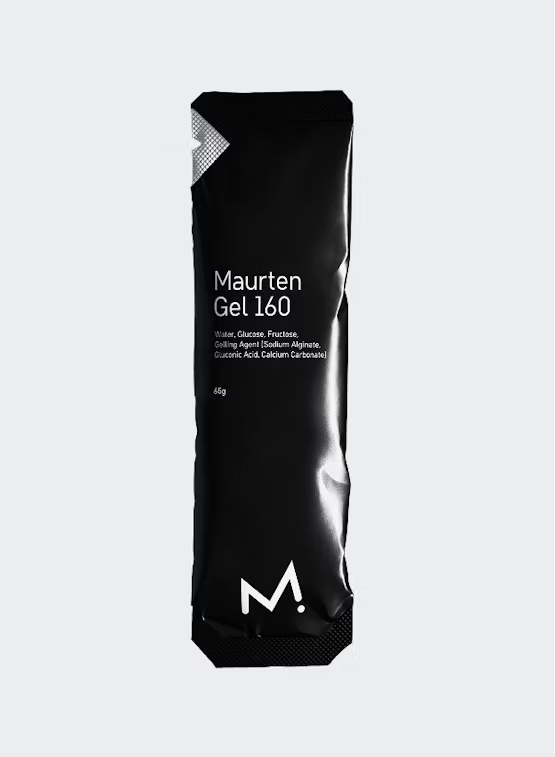
Gravel cycling – Fast freedom on dirt roads
Share
🚴 Gravel cycling – Fast freedom on dirt roads
Gravel cycling has become very popular in recent years, and for good reason. It combines the speed of road cycling with the versatility of mountain biking into one sport where you can enjoy the freedom, varied terrain, and the joy of choosing your own route.
Gravel cycling simply means cycling on various unpaved roads – such as dirt roads, forest roads and even light trails – but the bike is also great for asphalt. This is made possible by the special construction of the gravel bike: it is fast, stable and comfortable to ride on varying terrain. Gravel is Finnish for gravel, so the sport is gravel road or dirt road cycling in Finnish. But there is much more to gravel bikes than that.
What makes a gravel bike special?
A gravel bike looks like a road bike on the surface, but differs in a few essential ways:
- Tire space : A gravel bike can accommodate wider tires, usually 35–50 mm wide, which improve traction and ride comfort on uneven terrain.
- Frame geometry : Often a little more relaxed than on a road bike, but gravel bikes can also be found with very sporty, even race-suitable geometries.
- Gearing : Gearing varies – many models have a simple 1x11 or 1x12 gear set, but some use a front derailleur, which can usually have 20-24 gears. A simple 1x often works great on dirt roads. You can also choose a mechanical or electronic gearing.
- Handlebar : The drop bar is the most common, offering multiple riding positions and good ergonomics even on long rides. Some may also ride with a straight bar.
- Versatility : A gravel bike can function as a training and touring bike as well as a commuting bike. In winter, you can get wider studded tires if you want, and even mudguards.
Driving characteristics and equipment
Gravel cycling is similar to road cycling in many ways, but the terrain is more varied. The bike is stable even on loose sand, and with the right tires, the ride remains comfortable even on asphalt. I have a Cervélo Áspero, a full carbon gravel bike with 11 gears. It is very fast and ergonomically excellent – the perfect combination for fast jogging and adventure. Unfortunately, my bike doesn’t have many attachment points, but you can attach various bags etc. to it.

By changing the tires and rims, you can adapt your gravel bike to the perfect tool for different needs. If you want, you can ride with narrow road tires or wider studded tires that are better suited to softer surfaces or trails. You can easily change the rims if you want to use different tire widths for different purposes. Just remember that 11 or 12 gears may feel too long for road riding. But you can easily get the thrill of speed on an 11-speed bike with the right tires on asphalt.
The tires are either a slight compromise or directly intended for the terrain you mainly ride on. Wider ones are more comfortable on more challenging terrain. Narrow ones are suitable if you ride more mixed rides only on hard dirt roads and even on asphalt. I have 40mm tires and they can handle occasional more challenging places even though they are not optimized for them. The Panaracer GravelKing X1 also seems to roll very well on asphalt. You can vary the tire pressure slightly depending on the surface. A softer tire increases riding comfort, while a harder one usually rolls nicely on hard surfaces.
There are so many different types of tires. Some have a fairly smooth area in the middle and the studs only on the edge, some have small studs all over, and some have chunky studs. You can also often choose a more puncture-resistant and lighter version of the same tire. For example, there were three versions of my X1. I took the middle one, the normal X1. The X1 R, or so-called race version, is light but more prone to punctures. On the other hand, the X1+ is really well protected but heavier. A more protected tire is worth it if you're going on a long bike ride.
Tubeless tires are very good for gravel riding. There is a tube inside the tire that automatically fixes holes when they occur. You can also carry a small battery pump or even a patch kit. And remember to replenish the tube regularly. Because it tends to dry out a little over time. If you ride with inner tubes, it is worth taking an inner tube with you on a long ride.
Finnish dirt roads – a treasure trove for gravel cyclists
Finland is full of perfect gravel bike routes. You can find gravel roads almost everywhere, even in the capital region. For example, from Helsinki you can quickly ride long stretches of gravel road to the countryside or along a river or the seashore. And you don't have to go far to find great routes.
Gravel cycling is also great for trail runners who want to expand their training or seek more endurance and speed. The first ride on a gravel bike can be a real “wow” experience – the lightness, comfort, speed and quiet rolling are immediately impressive. Compared to a basic city or hybrid bike, the difference is like night and day.

🔍 Route websites and route services in Finland
Here are some reliable sites/services that share cycling and gravel routes:
| Service | What does it offer/why is it a good source? |
|---|---|
| Nature.fi | Finland's largest database of hiking and nature destinations. It contains hiking/cycling routes, maps, information on route types, surface, and lengths. To nature |
| Bikeland.fi | The official Finnish cycling route introduction website: routes, cycling types such as gravel & bike-packing, route filters (difficulty, distance), services on the route. Bikeland |
| Komoot | Community route sharing platform; several Finnish gravel collections available. Easy to see route profiles, surfaces & lengths. komoot.com |
| Outdooractive | Finland also has many scenic routes and large cycling routes (road, gravel, bike-packing) – user reviews, maps. outdooractive.com |
Special mention here is also made of trailmap.fi , which is definitely the best application for planning your own route.
Touring bike or racer?
There are many types of gravel bikes:
- For hikers, there are aluminum and steel frame models with lots of attachment points for bags and equipment. Of course, nothing prevents you from hiking with a carbon fiber frame, and these days they often have more ready-made attachment points. Carbon fiber in no way makes the bike weak. a
- For those with a competitive spirit, there are lightweight and aerodynamic carbon fiber models available, which resemble road bikes in their riding characteristics.
People often ask if it's worth getting an electric gravel bike. I can't answer this myself, except that why not if you feel like it. However, electric assistance doesn't do all the work. For example, you can go further with it than you can without electricity, you can save your joints and if it gets you moving, that's just a plus. There aren't very many electric gravel bikes available, but there are some.
So what is the best gravel bike for you? First, you need to consider what your bike is intended for. Commuting, training, hiking, racing, some or all of these. If the bike is intended for riding, for example, long tours in addition to training and racing, it may be a compromise of sorts. Perhaps the bike could then have a slightly more relaxed riding position and plenty of attachment points, but still have a carbon fiber frame and rims, as well as high-quality parts to make the bike lightweight. But a bike with more competitive ergonomics is also quite suitable for commuting. I personally recommend hydraulic brakes and a sufficiently high-quality gearbox. Carbon fiber rims and even handlebars can be purchased later as an upgrade if you don't want to invest in them when buying the bike.
Shoes, pedals and practical tips
Gravel cycling is most often done with mountain bike shoes and SPD mountain pedals , as they make it easier to walk on rest areas or to pedal the bike in more difficult places. Mountain shoes are just the right amount of support and grip well on uneven surfaces. Nowadays, there are also gravel shoes that closely resemble mountain shoes.
Especially if you are planning longer trips, it is important to also invest in a saddle and bar tapes and good cycling shorts that improve riding comfort. With small adjustments and the right equipment, a gravel bike can be the perfect companion for all kinds of riding. The carbon fiber handlebar also absorbs shocks nicely.

Why gravel?
Gravel cycling is trendy now, but above all, it makes sense. It offers freedom and versatility: one bike is enough for many uses. At the same time, you get fast-paced exercise in nature, you can ride alone or in a group and participate in various events and competitions. In Finland, gravel events are now organized all over the country, from Lapland to Southern Finland.
If I could only recommend one bike for most purposes, it would be a quality gravel bike. And when winter comes, you can attach the gravel bike to a trainer (e.g. Wahoo Kickr Core) and ride it indoors. More stories about indoor cycling later, which is currently in its season, at least for me.
🗺️ Gravel routes in Helsinki – planning and inspiration
There are many good apps for planning routes, such as Komoot , Outdooractive , Strava and Garmin Connect . However, the best map for Finnish gravel cyclists can be found at Trailmap.fi , where you can easily see the gravel roads and their condition. In others, routing specifically on gravel does not work as well.
If you are looking for inspiration for gravel routes in Helsinki or want to go for a run from Eastern Helsinki, I recommend trying the routes that go through Mustavuori, Vuosaarenuippu, Sipoonkorvi and Hakunila . You can easily put together 30–70 km long, gravel-heavy tours with as little asphalt as possible.
Here are a few routes in the east:
58km gravel route through beaches and forests
70km gravel route to Sipoonkorpi
🥤 Fuel for long gravel rides
Gravel cycling is often long and takes place in variable weather conditions. Good hydration and adequate energy intake are important to keep your legs light throughout the ride. Especially on hot rides or rides lasting several hours.
Here are some recommendations that work based on our own experiences and customer feedback:
🚴 Long runs and hot days
-
Tailwind Endurance Fuel
→ An excellent choice for runs longer than 2 hours when you want to combine carbs and electrolytes in one bottle. Mild taste, also works when hot. Stomach-friendly. - Näak Ultra Energy Drink
- → A sports drink with a bit of protein and amino acids, especially suitable for long adventures of more than 3 hours. Not too sweet, good for the stomach.
🍫 For a break or in your pocket
-
Näak Ultra Energy Gel
→ A gel developed for endurance athletes, which also contains electrolytes. Suitable for long-term pedaling, especially when used in conjunction with a sports drink. -
See you later.
→ Easy and filling snack for breaks – perfect for when you don't like gels or when you just want a snack. Really soft and easy to eat. Flavor options include berries, caramel macchiato with caffeine and peanut butter. - NOSHT Jollos energy candy → Natural, soft energy candy. Works quickly, but doesn't sting, even if you take several of them.
💪 Recovery after a ride
-
Tailwind Recovery Drink
→ A recovery drink that combines carbs, protein and electrolytes. Great after a long ride – mixes easily with cold water without a shaker and works immediately.
💡 Tip: If you're going on an adventure in hot weather or heading to remote areas, bring 2–3 water bottles and combine sports drink & water. In addition, a few gels, one bar and a small salty snack will cover a 3–5 hour ride well.
Team Future Peaks success in gravel
Our new team member Karoliina Leinonen just won the Tartu Rattamaraton gravel race over a distance of 126km. The trip was very muddy but the energy worked well and Karoliina got to ride in a good group. It is very important that energy products work over a long distance and are stomach-friendly. We can almost even go so far as to guarantee this for our own products. I have personally tested all energy products either in ultra running or long cycling. Congratulations Karoliina!
Thanks for reading and see you on the gravel roads!
















